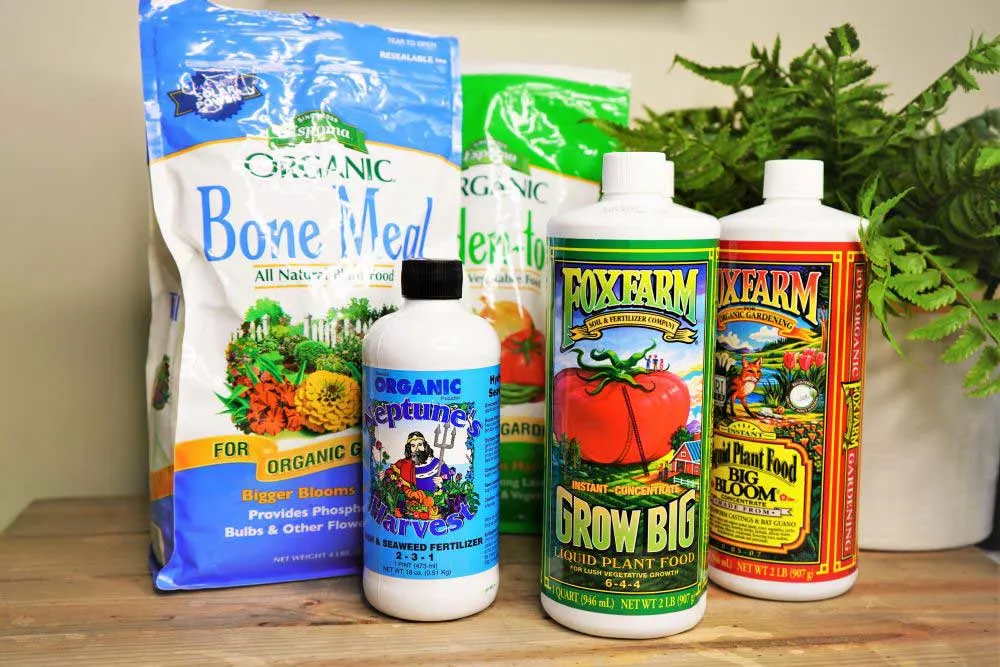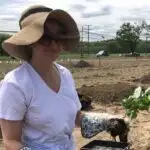Ghost peppers are relatively easy to grow, pack in the heat, and taste great in homemade hot sauce. We’ll teach you how to grow ghost peppers (bhut jolokia) from seed to harvest.

The ghost pepper, or bhut jolika, is well known for its fierce heat and unique, wrinkly shape. Clocking in at approximately 1,000,000 SHUs on the Scoville Scale, this pepper will definitely add some spice to your garden. In this guide, we will discuss how to grow ghost peppers from seed.
If you want to skip the process of starting ghost peppers indoors, you can purchase a young plant for your garden. Some garden centers sell ghost pepper plants, or you can check on Etsy.
Step 1: Buy Your Ghost Pepper Seeds

Perhaps one of the most enjoyable parts of gardening, purchasing seeds! We love browsing seed varieties and deciding which to plant. One of our favorite ghost peppers is Jay’s Peach Ghost Scorpion.
The pods ripen to a beautiful shade of peach and they add unique color to our garden. We suggest keeping it interesting and choosing a few different varieties. Check out our list of favorite retailers to buy pepper seeds online.
After you have decided which variety of ghost pepper you will plant, it’s time to pick out soil and fertilizer.
Step 2: Choosing The Best Soil

If you are starting your ghost peppers from seed indoors, it is best to use seed starting mix. You can find this at any gardening supply store, or online on Amazon.
Check our guide here for how to start pepper seeds indoors.
Seed starting soil is a light, fluffy mix, usually containing peat moss, perlite, and vermiculite. It creates the ideal environment for germination. It usually does not contain nutrients either, so fertilizer should be applied about 1 week after the seeds sprout.
Approximately 3-4 weeks after sprouting, you will move your plants to another soil medium. Don’t overthink which soil to get for growing your ghost peppers. We recommend a loamy, well-draining organic potting soil.
Our favorite potting soils:
You should avoid using an “in-ground soil” if you will be growing your ghost peppers in pots. This soil is too heavy for container gardening and will not allow for adequate drainage and aeration to the root zone. You can find an acceptable potting soil at any garden store, or purchase one online.
Step 3: Start Your Ghost Peppers Indoors

Before starting your ghost pepper plants, you should first consider how much space you have to grow them. Make sure you have enough room to house your seedlings, as well as the larger plants that may not be ready to transition outside yet.
When to start ghost peppers: Start seeds 8 weeks before your plants will be moved to their final home outdoors. Ghost pepper plants will thrive in outdoor temperatures between 75-85°F.
One thing to keep in mind is that ghost peppers take a long time to germinate. Like other super hot varieties, they are very stubborn and can take up to 35 days to sprout.
When starting ghost peppers indoors, we highly recommend using a seed heating mat to keep the soil at an ideal temperature of 80-90°F during germination.
Sow your ghost pepper seeds 1/4 inch deep in pre-moistened seed starter mix. We recommend bottom-water seed trays from Bootstrap Farmer. These are high quality and can easily be reused every year. They also sell some great seed starting kits, including our very own Pepper Geek kit!
Now that your seeds are sown, it is time to place them on your seedling mat and wait! Keep a close eye on the moisture of your seed trays and water them if the soil feels dry to the touch. You want the soil to be moist, but not soaking wet.
After your seedlings sprout, it’s time to place them under your grow light. If you are new to pepper growing, you do not need to invest in anything fancy. Check out our grow light recommendations and choose a light that fits your space and budget.
If you have a sunny windowsill, you can also move your peppers there to grow. Where we live, we always use grow lights for the best results.
Step 4: The Best Fertilizer For Ghost Peppers

Fertilizing is one of the most confusing topics for new pepper growers. You’ll want to begin fertilizing your ghost pepper seedlings as soon as they form their first set of true leaves (about 2 weeks after sprouting).
Because the seedlings are young, start with a 1/4-1/2 strength feeding regimen. The directions on your fertilizer should specify the correct ratios.
To keep things simple, we like to use the Fox Farm Trio. This trio provides necessary nutrients throughout the entire growth cycle of the ghost peppers.
Step 5: Transplanting Ghost Peppers

Before you know it, your ghost pepper plants will need to be transplanted into larger pots. You’ll know your plants are ready when the roots reach the end of the seed trays. At this stage, the plant will be around 3 inches tall.
We have a full guide to transplanting here. At this point, you will no longer be using seed starting mix. Transplant your ghost peppers into organic potting mix at this time.
Moving the ghost peppers into large pots will allow the plants to continue to grow indoors until outdoor temperatures are livable. We transplant our seedlings into 3″ pots where they stay for the remaining 4-6 weeks before going outside.
Moving Outdoors
If you are planning on transplanting your pepper plants into the ground, be sure there is no longer a risk of frost. This will devastate your ghost pepper plant and will ruin all the hard work and time you put into sprouting seeds.
Before moving your plants outside, you will want to harden them off for a couple of weeks. The idea is to slowly adjust your plants to direct sunlight by putting them outdoors for increasing amounts of time.
Ghost peppers like room to spread out and grow, so be sure to give them a couple feet between plants. If your ghost peppers are going to stay in a container for the season, their final pot should be at least 3-gallons.
Step 6: Harvesting Your Ghost Peppers

Ghost peppers have a long growing season – up to 150 days from planting to harvest! The pods can take a long time to fully ripen and change color. We love watching the colors turn slowly throughout the weeks.
Determining when to harvest your ghost pepper depends on the variety grown. A ghost pepper is ready to harvest when it has reached its final color. Peach ghost peppers will ripen to a light peach color, while some chocolate ghost varieties turn deep brown.
After you harvest your ghost peppers, there are many things you can do with them. We like to dehydrate ours, make hot sauce, and grind them into powder. You can also try adding some ghost pepper to stir-fry or chili if you like it really hot.
Add a few slices to homemade spicy pickles to give them a decent kick. The possibilities are endless!
Read Next:
Are you planning on growing ghost peppers this year? Let us know which varieties you’ll be growing and what you plan on doing with your harvest! We hope this guide was a helpful start in helping you grow ghost peppers from seed.

Crystalyn
Crystalyn loves spicy food and getting creative in the kitchen. When she isn’t finding new ways to use hot sauce, shes very busy watching cat videos on the internet.

Jim Ayer
Monday 18th of September 2023
I have 7 plants that have been loaded with bloom for the past month (zone 7b). But I only have 2 fruit. Any ideas? I’m a successful organic Gardner.
peppergeek
Monday 18th of December 2023
I'm not sure what exactly may have happened with your plants. If they're indoors, that's a no-brainer - they're probably not getting pollinated. They'll need wind or pollinators. If outdoors, it could have to do with the nutrient in the soil - perhaps too heavy on nitrogen. It could also have to do with temperature. If the flowers are falling off, it is usually due to high heat or poor pollination. If they're all the same variety, it could have to do with something genetic. We (rarely) have a plant that will not produce its own pollen (sterile), and thus cannot self-pollinate. But, if you have multiple varieties this is not the issue.
Dennis Reid
Sunday 12th of March 2023
Do you have a discount code for BOOTSTRAP FARMER?
peppergeek
Wednesday 15th of March 2023
No, unfortunately they never run sales
Eric
Thursday 15th of September 2022
My ghost peppers are growing alot but it has been nearly 2-3 months and are quite large peppers in size about a finger length or half finger in length and there still green! why arnt/wont they turn color!
Eddie
Friday 17th of June 2022
I put my seeds in water for a day or until they sink to the bottom then they're ready
Norm Hollis
Friday 4th of March 2022
How tall do they grow, how often to water,is soil kept dry or moist, are grow bags suitable for this plant. can you over winter the plant and how to do so.